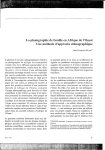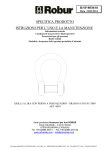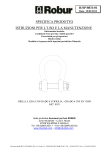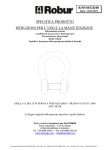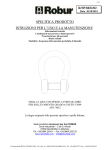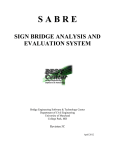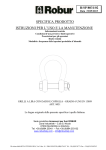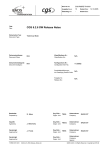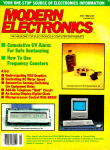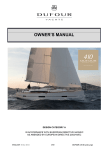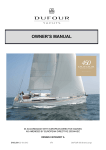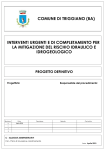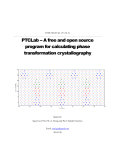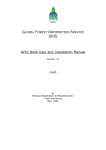Download Manual - Entropy Piano Tuner
Transcript
Entropy Piano Tuner User Manual Version 1.1.3 November 20, 2015 Haye Hinrichsen and Christoph Wick Faculty for Physics and Astronomy University of Würzburg, Germany pianotuner.org Contents Preface.........................................................................................................................................2 Entropybased tuning in a nutshell..............................................................................................4 Hardware requirements and installation.......................................................................................5 User interface...............................................................................................................................7 Tuning procedure.........................................................................................................................8 Preparation..............................................................................................................................8 Recording...............................................................................................................................10 Calculation............................................................................................................................17 Tuning...................................................................................................................................21 Feedback....................................................................................................................................25 Troubleshooting.........................................................................................................................26 Appendices.................................................................................................................................27 A: MIDI functionality..............................................................................................................27 B: Tools for data analysis.......................................................................................................28 C: Frequently asked questions...............................................................................................29 CCBYSA Preface What the entropy piano tuner is: • • • • It is an experimental opensource software for piano tuning. It is free of charge for everyone (GPL3 license). It offers a modular platform for writing and testing new tuning algorithms. It is designed for experienced piano technicians, software experts, and scientists. And what it isn't: • • • The EPT does not intend to compete with commercial highend tuning devices. It is not suitable for laymen to tune their piano by themselves. It does not save time. About the history The history of the entropy piano tuner dates back to the year 2012 starting with a public lecture for physics teachers about the notion of entropy. In order to show that entropy is more than just a theoretical concept of statistical physics and that entropy has a practical relevance, we demonstrated that the power spectrum entropy of a tuned piano is lower than the entropy of a piano out of tune. Moreover, it was shown that a simple randomsearch algorithm produces a reasonablylooking tuning curve. From the outset this discovery received a lot of attention. After another talk in Porto Alegre we published the idea in a Brazilian journal for the didactic of physics. This publication, written for physics teachers, developed an unwanted momentum. In a press release the MIT technology review posted the headline that the new “algorithm” would put human piano tuners out of the job. This released an exaggerated wave of attention in the US media. Without contacting the authors, leading journals such as the Wall Street Journal and the Daily Mail copied these misleading statements. Within two weeks this wave propagated via the UK to Europe and could only be stopped by a press release of our university. The fact was that at this point not a single piano had been tuned by the new algorithm. Why are the media so excited about an exotic topic such as piano tuning? The reason for this may be an ongoing controversy about the role of electronic tuning aids among musicians as well as music technicians and manufacturers. While in the US the professional use of electronic tuning devices is becoming increasingly common, the vast majority of pianists and piano technicians considers aural tuning as clearly superior. This controversial atmosphere may explain why our paper, claiming that a simple oneline formula can tune a piano, received such a disproportionate attention. Entropybased tuning is particularly fascinating in so far as it behaves in many respects like a human tuner. As a random method the results are nonreproducible, i.e., the produced tuning Entropy Piano Tuner – p. 2 curves look similar but they are never identical. In addition, the tuning curves are surprisingly irregular, in sharp contrast to the reproducible smooth tuning curves produced by professional commercial tuning devices. Since the tuning curves produced by aural tuners exhibit similar irregularities, we expressed the conjecture that these fluctuations are most probably not caused by human imperfectness, rather they might reflect the specific fingerprint of the instrument and could be a typical characteristics of highquality aural tuning. However, until recently it was not at all clear whether entropy minimization would lead to an acceptable tune. With the Entropy Piano Tuner (EPT) we now publish a free opensource software that allows everyone to test and evaluate the method. In addition, the EPT comes with an inbuilt synthesizer so that you can connect a MIDI keyboard and hear the result of the calculation in advance – before the instrument is actually being tuned. Linux prototype of the EPT (2014) As you will probably see, the results produced by the EPT are acceptable but certainly not perfect for professional demands. At least this is the conclusion of an independent systematic evaluation carried out at the University of Music in Würzburg. However, we believe that we are only at the beginning of an exciting development. For this reason we decided to publish the EPT as an opensource project, inviting everyone who is interested to contribute to the project. Moreover, the modular structure of the code allows everyone to implement alternative tuning algorithms without much effort (see develop,pianotuner.org). We would be grateful for suggestions and criticism by email to info@ piano tuner.org. Acknowledgments The development of the Entropy Piano Tuner wouldn’t have been possible without the support of other people and institutions. We thank in particular Prof. Dr. W. Kinzel and the Faculty for Physics and Astronomy for financial support. We are also very grateful for the support by Prof. Dr. A. C. Lehmann, B. Olbrich and M. Kohl at the University of Music in Würzburg, who conducted the practical tests. Finally we would like to thank A. Heilrath, who contributed to a previous version of the pitch recognition algorithm. The EPT was translated into various languages by Prof. Dr. S. R. Dahmen, A. Frick, M. Jiminez, L. Kusmierz, X. Monnin, Dr. Jaegon Um and Zhou Ying. Many thanks to all of you! We would also like to thank P. Bax, A. Capurso, I. Oleg, V. Päivinen, and R. Schmidlin for providing particular feedback and helping us to debug the code. Christoph Wick and Haye Hinrichsen Würzburg, November 2015 Entropy Piano Tuner – p. 3 Entropy-based tuning in a nutshell Why is it impossible to tune a piano simply by using a conventional tuning device which can be bought for less than $100? Why does piano tuning require special skills and many years of professional training and experience? You certainly know the main facts about musical temperaments, including the pure temperament, the equal temperament and a large variety of historical temperaments. Nowadays Western music is predominantly based on the equal temperament. However, piano tuning is not only a matter of temperaments, even more important is another physical peculiarity of steel strings under high tension, namely, the socalled inharmonicity. The origin of the inharmonicity can be explained as follows. An ideal string vibrates because of its tension and can be tuned by varying the tension. Apart from the fundamental oscillation mode it is possible to excite a whole series of overtones, called partials, whose frequencies are integer multiple of the fundamental frequency. On the other hand, a massive rod made of steel vibrates by itself due to its intrinsic stiffness. The frequencies of its partials compared to the fundamental frequency are given by square numbers rather than integers. This produces a sound with a very different texture, as you know it, for example, from the typical sound of a xylophone. A piano string behaves almost like an ideal string, but because of its intrinsic stiffness it behaves also a little bit like a rod. This applies in particular to the very high and low tones of the piano. Because of these corrections the series of partials is a little bit shifted towards higher frequencies as we go up in the harmonic series of partials. Therefore, if we were to tune a piano with a conventional tuning device, these high partials would not match as expected, leading to the impression as if the piano was out of tune. As one of various technical skills, the experienced piano technician knows to compensate these corrections by slightly elevating and lowering the pitches of the high and low keys, respectively. This socalled stretch is extremely important for welltuned pianos and varies from instrument to instrument and also from tuner to tuner. As a result one obtains a tuning curve, for example the pink one shown in the adjacent figure. Typical tuning curve. Source: Brian Tung, Wikimedia Commons A theoretical calculation of the tuning curve is highly nontrivial. First of all, the tuning curve is different for each instrument. Moreover it may depend on the surroundings, the climate and even on the age of tuner and customer. In other words, there is no unique solution, rather there is a broad variety of possible tuning curves. Which to prefer is basically a matter of taste. On the market you can already buy various highend tuning devices and software packages for Entropy Piano Tuner – p. 4 piano tuning which are able to produce stretched tuning curves. Most of them extrapolate the expected inharmonicity of the strings and compute a suitable tuning curve as a reasonable compromise. Typically the tuning curves produced by such devices are smooth (like the green curve in the figure above). Contrarily, tuning curves produced by human aural tuners are much more irregular, as you can see at the pink line in the figure above. The method of entropy minimization implemented in the present software is based on the idea that tuning means to establish a maximal degree of order in the spectrum of the partials. In physics and information theory the simplest measure of order and disorder is known as entropy. As you probably know, physical systems tend to be as disordered as possible, reflected by the famous Second Law of Thermodynamics. In the case of piano tuning it is the other way round: tuning means ordering, leading to the conjecture that a tuned piano should have a minimal entropy. Moreover, it should be possible to tune a piano by searching for the minimal entropy. If so, this would mean that entropy, a single short formula written as H =−∑i pi log pi , would be capable of accomplishing the complex task of piano tuning. Clearly, this would be a remarkable discovery in itself. With the entropy piano tuner (EPT) we would like to demonstrate that this idea really works. Incidentally entropybased tuning has a lot in common with human aural tuning. For example, the resulting tuning curves look similar, but as they are generated by a random process they are never identical in detail. In addition, the tuning curves produced by the EPT are not smooth, rather they exhibit pronounced fluctuations. As already mentioned above, we believe that these fluctuations are essential and reflect the specific irregularities of the instrument. One of the disadvantages of entropybased tuning is that all keys of instruments have to be recorded separately before the actual tuning takes place. However, the process of recording is needed only once for each instrument. Hardware requirements and installation Device The EPT runs on most PC's and tablet computers and even on mobile phones. We recommend a laptop computer with a multicore CPU. The supported platforms are Apple OSX ®, AppleiOS®, Microsoft Windows® Vista,7,8, Android®, and various Linux distributions. Windows® and Blackberry® mobile devices are currently not yet supported. The EPT is compatible with all audio devices which also work with the wellknown audio editor Audacity. Microphone To operate the tuner one needs an external microphone of good quality. We recommend a low noise condenser microphone with a linear frequency response. Inbuilt microphones of tablets and smartphones may be used for testing but they may fail at very low and high frequencies.1 1 This depends very much on the device. For example, the iPad Air works surprisingly well with the inbuilt microphone although it cuts away all frequencies below 100 Hz. Entropy Piano Tuner – p. 5 Headphone An ordinary headphone will be useful to hear the echo sound (see below) and to check the recorded tones. If you do not use a headphone you should mute the loudspeaker of your device in order to avoid unintended feedback via the microphone. MIDI keyboard Optionally you may connect an external MIDI keyboard which allows you to play and select the individual keys. With a MIDI keyboard you can hear the computed result of entropy minimization in advance before your instrument is actually being tuned. However, a MIDI keyboard is not required for tuning. More information about the MIDI functionality and the supported devices can be found in Appendix A on page 27. Installation To download the EPT please visit our website at piano tuner.org and follow the instructions. If you are using mobile devices you can download the application directly from the respective app stores. If you download the software directly from our website your operation system may ask you whether you trust external sources, allowing to install software that is not coming from a certified web store. In this case you have to confirm that you allow external software to be installed. The installation is carried out as usual by following the instructions of an installation wizard. Moreover, the links below the symbols lead to a page with more detailed installation instructions. The installation on mobile devices is fully automatic. Entropy Piano Tuner – p. 6 User interface After starting the EPT you will see the following graphical user interface. Press F for fullscreen mode. On mobile devices the appearance may be simplified depending on the size of the display. Because of the displayed keyboard the EPT can only be operated in landscape mode. As you can see, there is a tool bar at the left edge of the window, which allows you to select the operation mode (idle, recording, computing, and tuning). Above the keyboard there are two panels for the spectrum and the tuning curve with a grid according to the keys in the background. In the upper third of the window you can see the input level control and the panel for signal analysis. Updates / version check On startup the desktop versions of the EPT access our website to check the version of the current release. If a new version is available a message box opens, suggesting to update the application. Please follow the instructions. If you want to check the installed version manually please touch the info button in the upper right corner and compare the version number with the current version on pi anotuner.org. Entropy Piano Tuner – p. 7 The help system The help symbol with the lifebelt and the function key F1 open a brief instruction how to operate the EPT. It is a very short offline version of this manual for getting started which is already available in various languages. If you want to learn more about the specific function of the elements shown in the main window, you should use the context help of the EPT. First tap the question mark in the help toolbar and then touch the element to be investigated. Then EPT will then display a short explanation describing the functionality of the selected element. Tuning procedure Warning This software is not suitable for laymen who want to tune their piano by themselves. Piano tuning requires many years of comprehensive professional training and experience. Improper handling may inflict serious damage to your instrument, ranging from broken strings to irreversible deformations. It is understood that you are using this software at your own risk. Preparation Start the application First connect your microphone and start the EPT. Right after startup the EPT is in the idle mode, meaning that it listens to the microphone without taking any action. The long bar on top of the window indicates the input level which is adjusted automatically. Play a couple of tones on the piano and make sure that the displayed input level responds normally to your microphone. If it doesn't, please go the settings menu, choose the audio tab and select the proper input device. Entropy Piano Tuner – p. 8 Microphone Place your microphone on a tripod just in front of the opened cover of the grand. If you are tuning an upright the best results are obtained if you remove the covering plate below the keyboard and place the microphone there. Do not put the microphone directly on your instrument. If the microphone is in direct physical contact with the piano, it will be subjected to unwanted lowfrequency noise caused by the impact of the hammers. Similarly, if you are using a mobile device with an inbuilt microphone such as a tablet computer, you should not place it directly on the piano, instead put it on a soft support. At any time it is possible to temporarily disable (mute) the microphone by touching the corresponding button. Moreover, if you should have the impression that the automatic level control does not work as intended, you may reset it by tapping the refresh button. Create / open an EPT file Before recording one has to prepare a data file (*.ept) for the piano: • If you tune a particular piano for the first time press CtrlN or select FileNew from the menu. A dialog box will open, giving you the possibility to provide some data about the piano, e.g. its location, the current date and time, as well as some information about the manufacturer and the geometry of the keyboard. • One of the most important parameters is the concert pitch, i.e., the frequency of A4. This entry has no influence on the recording process itself, but it will serve as a reference pitch in the subsequent tuning process (see below). If you already know the desired concert pitch you can provide it here. If not, keep the default value of 440Hz. All settings can be changed later by pressing F9 or by selecting ToolsEdit piano data in the menu. • If you have tuned the same instrument previously simply load the corresponding file. To this end press CtrlO or select FileOpen from the menu. On desktops and laptops select the path and the file name as usual (on mobile devices there is only one standard path). The standard extension for piano data files is '.ept' which stands for Entropy Piano Tuner. • At any time it is possible to save the data by pressing CtrlS or selecting FileSave or FileSave as... from the menu. The EPT also saves your work in regular intervals in order to avoid data loss in the case that the application should crash. Entropy Piano Tuner – p. 9 Recording The recording mode After checking the microphone let us now switch to the recording mode. This can be done by pressing the microphone symbol on the left toolbar (see figure). Alternatively you can toggle cyclically through the operation modes by pressing the TAB key. The recording procedure has to be carried out only once for each instrument and takes about 2025 minutes. The piano does not need to be in a tuned state during recording. Having selected the recording mode, try to play a few keys on your piano. As you can see, there are two markers below the input level bar marked by “On” and “Off”. The “On”marker is fixed in the middle while the “Off”marker adjusts its position according to the input signal. As soon as the input level exceeds the “On”mark, the EPT starts to record the signal. The recording process is indicated by a big red circle in the signal analyzer panel in the upper right corner. Keep the key pressed until the input level drops below the “off”mark where the recording process stops. After a short period of signal processing, indicated by a blue rotating symbol, the EPT goes back to its original state: Ready Recording Processing Ready If you have the impression that the recording takes too much time, especially in the bass, you may gently release the key to stop the recording intentionally. Key selection and recognition Initially all keys of the displayed keyboard should be marked by a little red cross. If this is not the case, you may clear the recorded data by selecting ToolsClear recording in the menu. The goal of the recording process is to convert all red crosses into green tick marks: Entropy Piano Tuner – p. 10 In the figure above the leftmost key A0 is colored red. This coloring indicates that this key has been selected and that it is ready for recording. In order to make the recording process as simple as possible and to reduce physical interaction with the device, the entropy piano tuner recognizes the pressed key automatically. The color scheme used for the keys follows the logic of a traffic light: • If the recognized key of the piano coincides with the selected red key, its color changes to orange and then – after successful recording – to green. At the same time a green tick mark appears above the key, indicating successful recording. • Contrarily, if you play a note on the piano which does not coincide with a selected key, the EPT will inform you that you have played the wrong tone by shortly highlighting the corresponding key in gray. No action will be taken. • The only exception: if the recognized key is located adjacent to the selected one, the selection will move to this key before the recording process starts. This allows you to record all keys from left to right simply by playing one tone after the other. For pianos which are heavily out of tune this automatic jumping can be disabled in the settings. • If the selected keys already green, you can play it again in order to repeat the recording of the same key once again. You can select any key by a mouse click or by touching it. Alternatively you can move the selection using the arrow keys of your keyboard. With the button shown left or by selecting the corresponding menu entry you can delete all blue recording markers. Forced recognition Sometimes it may happen that a particular key is not correctly recognized. In this case you will see a gray coloring appearing somewhere else, usually displaced by a fifth or an octave. Background: The entropy piano tuner recognizes the keys on the basis of the frequency of the partials. To this end we assume an empirical intensity distribution of the partial spectrum. However, in practice it may happen that the specific properties of the instruments (such as resonances of the soundboard) can lead to an unexpected amplification or suppression of certain partials. In this case the recognition algorithm may fail. We hope to improve the quality of key recognition in future versions of the entropy piano tuner. If the EPT fails to recognize a particular key of the piano, it is possible to force its recognition by clicking the corresponding key twice. Alternatively you can press the enter button, toggling between normal and forced selection. Forced selection is indicated by dark red and dark green coloring. Entropy Piano Tuner – p. 11 Here is again a short summary of the color scheme: Selected key ready for recording Selected key, ongoing recording Selected key, recording successfully completed Recognizing tone on a nonselected key Forced key ready for recording Forced key, recording successfully completed Recording procedure and quality control Record all keys subsequently from left to right. If the piano is not too much out of tune you can record the keys as they are. However, for keys with two or three strings (unisons, bichords and trichords) one can significantly improve the quality of the recording if all but one of them are damped by wedge mutes so that only a single string vibrates. During recording external noise should be avoided as much as possible. If unwanted noise was encountered during recording or if you are not satisfied with the recording quality, you can easily repeat the recording by playing the same note again. In order to get an impression about the quality of the recorded signal, the EPT provides several quality indicators: • Spectrum The integrated spectrum is the data set that is actually measured and serves as a basis for all further calculations. The spectrum is displayed just above the keyboard. For example, this is the typical spectrum of the key A2: The red line is a measure of the intensity of the power spectrum and its horizontal coordinate corresponds to the respective keys below. As you can see, piano strings exhibit a rich spectrum of partials. In the present example the fundamental frequency shows the most pronounced peak, but this is not always the case. Furthermore, there is a whole series of higher partials. The EPT recognizes these partials and marks them by a little blue square at the peaks. If the red curve is exceptionally irregular or if hit exhibits a large offset or if the blue dots are not placed as they should this could indicate that the recording should be repeated. Entropy Piano Tuner – p. 12 • Quality indicator The signal analyzer – the small panel in the upper right corner – displays the recording symbol, the name of the note and its frequency. Moreover, it shows a small vertical bar on the left side which indicates the quality of the recorded signal. This degree of quality is also reflected by the color of the indicator which varies continuously from red to green. The quality indicator measures how well the recorded data matches with the theoretical inharmonicity formula for cylindrical steel strings. In the bass, where the strings are copperwrapped, the coincidence is expected to be moderate (~ 40%, orange) while in the middle you should be able to get very good results (>80%, green). In the highest octave the quality indicator does not respond because in the treble there are not enough partials to be evaluated. • Echo sound In the event of successful recording you will hear a brief echo of the recorded tone in your headphone or in the loudspeaker. If you cannot hear this echo sound please check the audio settings of the application (ToolsOptionsAudio). The purpose of this echo sound is twofold. On the one hand the echo confirms that a key has been recorded successfully so that there is no need to constantly look at the screen. On the other hand the synthesized echo imitates the recorded string and thus it should sound similar. What you actually hear is not just a playback of the recorded signal, rather the EPT synthesizes an artificial sound on the basis of the detected pattern of partials. This allows you to quickly detect possible mistakes on an intuitive basis. For example, a faulty recognition of partials would generate a sound which is immediately perceived as unfamiliar. In this case you should record the same key once again. This button allows you to mute the speaker and the echo sound. Note that this button is only shown on sufficiently large devices. Otherwise use device controls. Once you have recorded all keys (all of them marked by green ticks) it is time to save your work. This can be done selecting “FileSave” from the menu or simply by pressing CtrlS. Entropy Piano Tuner – p. 13 Tuning curve and inharmonicity During recording various markers have been set in the second window above the spectrum. After completion of all keys the typical appearance of this panel should be similar to the following: The blue markers indicate the deviation of the measured frequency from the mathematical equal temperament. The gray horizontal grid lines in the background are arranged at a distance of 10 cents (a cent denotes 1/100 of a half tone) so that the whole window spans a little bit more than a half tone. In the recorded data you should be able to see the stretch, that is, the lowered pitches in the bass and the increased pitches in the treble. If the piano is not terribly out of tune, the blue markers can be interpreted as the tuning curve that was produced by the previous tuner. The gray markers indicate the inharmonicity of the keys. The degree of inharmonicity is quantified by a single number, the socalled inharmonicity coefficient B. As you can see in the plot to the right, the inharmonicity varies over two orders of magnitude. However, the values vary only slightly from key to key, the only exception being the point where one goes from one the bass bridge to the treble bridge. Here it is possible to observe a pronounced jump in the data. Since the gray inharmonicity markers are shown alongside with the blue tuning markers in the same panel, we decided to plot them upsidedown. For the user of this software the specific values of B are not of particular interest, rather it is important that the gray markers (apart from the aforementioned jump between the two diagonal sections) vary smoothly, forming a more or less continuous curve. Outliers usually indicate that something is wrong. In this case it is recommended to record the corresponding key again. Thus, the primary purpose of inharmonicity measurement is that of an additional quality control. If a particular key displays an exceptional inharmonicity even after repeated recording, this is most likely caused by some specific irregularities of the instrument, e.g. unwanted resonances of the string, the soundboard, or interference with nonmuted strings in the treble. If you cannot identify such a cause then there is no way but to accept the measurement as it is. In the highest octave, where only few partials are available, the inharmonicity measurement would be unreliable. Here the EPT does not show the gray markers. Entropy Piano Tuner – p. 14 Final check of the recording quality If you are using a PC or a laptop you should select one of the keys (which becomes green) and then move the selection with the arrow keys ←→ along the whole keyboard. While moving have a look at the quality indicator in the upper right corner (see above). This allows you to easily discover keys where the recording quality is exceptionally low. Finding such a key it is recommended to repeat the recording and to look for possible reasons. Quality values of less than 1/3 (indicator colored red) should be avoided. Entropy Piano Tuner – p. 15 Acoustic control of the recorded data using a MIDI keyboard An optional but very efficient way of verifying the recording quality is to play your recorded piano on a MIDI keyboard. Please connect your MIDI device to your computer (usually per USB or bluetooth) and make sure that it is properly recognized by the operating system. If you start the EPT after connecting the MIDI keyboard it should be connected automatically. Otherwise, select the MIDI device in the audio settings. Once the keyboard is connected properly, you should be able to Recorder play on it. As already mentioned, the entropy piano tuner comes with an inbuilt synthesizer. The Spectrum synthesizer samples a super MIDI position of sine waves according to the recorded spectrum. Hence Synthesizer what you hear is not a simple playback of the recorded sound, instead the synthesizer produces an artificial sound reconstructed from the spectral data. As you will probably notice, the sound mimics the one of the actual piano, particularly in the bass. The MIDI synthesizer of the EPT is dynamic and polyphonic, meaning that you can play several keys with different intensities at the same time. In the recording mode the synthesizer plays the keys exactly in the same pitch as they were recorded. Thus, intervals out of tune on the recorded instrument will be also out of tune when played on the MIDI keyboard. If you have a MIDI keyboard at your disposal, we recommend as a final quality control to play all recorded keys and to listen for possible irregularities. If you find a key where the synthesized sound appears to be strange and somehow seems to fall out of the series we suggest to record this key again. The EPT allows you to use a MIDI keyboard even with tablets and other mobile devices. Android devices need to have a USB connector supporting OTG (onthego). In addition, a special OTG adapter cable is needed (see figure). A list of OTGcompatible devices can be found here. Likewise, the EPT supports MIDI on the iPad. To this end a USBcamera adapter is needed. More information about the MIDI functionality can be found in Appendix A on page 27. Entropy Piano Tuner – p. 16 Android tablet supporting OTG Calculation Now it is time to switch to the calculation mode by touching the corresponding button in the left toolbar or by pressing the TAB key. As you will see, the appearance of graphical interface changes. In particular, there is no spectrum anymore, instead the panel for the tuning curve now extends over the whole window. The entropy piano tuner is designed as a modular software suitable for testing various tuning algorithms which may be implemented in the future. The tuning algorithm can be selected in the upper right corner of the window by pressing the Info button. Moreover, this button allows you to display information about the author and about essential operation instructions. The calculation is activated by pressing the “start calculation” button. In the calculation mode the markers have the following meaning. As before the bold horizontal line in the middle denotes the mathematical equal temperament, while the parallel grid lines in the background indicate deviations of 10 cents each. The markers in dark green color visualize the pitches generated by the algorithm, forming the tuning curve according to which your piano will be tuned in the next step. The gray markers in the background represent the recorded pictures normalized to A4. This allows you to see the previous tuning curve together with a new one. Implemented tuning algorithms Touching the Info button you can select the tuning algorithm and control its settings. Currently you can choose between the following three options: 1. the Entropy minimizer, for which the EPT was designed. 2. A Pitchraise algorithm for pianos heavily out of tune, which allows you to quickly generate an approximate tuning curve. 3. a simple Copy algorithm which simply maps the recorded pitches to the tuning curve. This allows you to reproduce the recorded levels and may be used for conserving tunes. In the following we shall discuss these algorithms in more detail. Entropy Piano Tuner – p. 17 1. Entropy Minimizer As outlined in the introduction, the entropy minimizer uses a new kind of algorithm which was proposed by us in 2012 in a Brazilian physics j ournal. Starting point is the assumption that an interval is perceived as harmonically tuned if the higher partials coincide as much as possible. Since the inharmonicity of piano strings makes it impossible to match higher partials perfectly, the goal of piano tuning is to establish a reasonable compromise. The idea is that the Shannon entropy, a measure for disorder, exhibits a local minimum in the vicinity of such a compromise. This is due to the fact that the entropy of two separate spectral lines is larger than the one of overlapping spectral lines: The entropy minimizer searches for such a minimum simply by trial and error. To this end it simulates what would happen if the pitch of a randomly selected key was modified in random direction. If this modification would lead to a reduction of entropy, it is accepted, otherwise it is dismissed and a new key will be selected. The entropy is calculated by simply summing the power spectra of all keys. This is as if one would press all keys of the piano simultaneously. This very simple setup ensures that the tuning algorithm is scaleneutral. In the EPT this algorithm is implemented in its original form. With the Info button you can open the dialog which is shown on the left. Here you can select the calculation accuracy, which basically limits the runtime of the search algorithm. It is recommended to select “infinite” in which case you have to manually terminate the algorithm as soon as you have the impression that the result has stabilized. To start the calculation simply press the corresponding button in the upper right corner of the main window. As you will see, the EPT goes through three different stages: • At the beginning the recorded spectra are filtered according to the frequency range and frequency resolution of human hearing. • In a second step the EPT computes a tuning curve that will be used as an initial configuration for the tuning procedure. This initial curve is computed deterministically by direct comparison of partials, establishing a compromise between various partial ratios. • Finally the Monte Carlo algorithm (the trial and error search described above) is started. You can watch in real time how the tuning curve is manipulated randomly. Only those Entropy Piano Tuner – p. 18 manipulations which reduce the total entropy will be accepted. The longer the algorithm is running, modifications will become less and less likely. As soon as you have the impression that the tuning curve is stable you may stop the calculation by pressing the same button again. The results produced by a random algorithm like the entropy minimizer are neither right nor wrong. You will certainly notice that repeated calculations yield similar but not identical tuning curves. In fact, the problem of piano tuning has many possible solutions, and the EPT just selects one of them. Perhaps you will prefer one solution over the other. Therefore, it is recommended to run the calculation process several times and to compare the results using a MIDI keyboard. 2. Pitch-Raise Algorithm (preliminary version) In practice one is often confronted with pianos which are either heavily out of tune or need to be adjusted by significantly raising or lowering the overall pitch. Usually such pianos are tuned in several sessions. In the first stage an approximate tuning is sufficient. The pitchraise algorithm 2 allows you to quickly generate an approximate tuning curve. Instead of all keys, only a few keys need to be recorded. In order to carry out a pitch raise on a piano that has not been recorded before, go to the recording mode and record a limited number of keys, for example A0,A1,A2,A3,A4,A5,A6. If possible use muting wedges so that only one of the strings oscillates. Since these keys are not adjacent, they are not recognized automatically, meaning that you have to select them manually before they are recorded. Then go to the calculation mode and choose the pitch raise algorithm. This algorithm is based on the assumption that the inharmonicity coefficient varies exponentially with the key index in the respective diagonal sections of the strings. However, between the two sections there may be a discontinuous jump in the inharmonicity. Therefore, the algorithm needs to know the number of the key where the right diagonal section starts. The default value is key number 28. Now start the calculation by tapping the corresponding button. This should create a piecewise smooth tuning curve. If you like you can now save this tuning curve. Finally switch to the tuning mode and choose the intended concert pitch in the piano settings (key F9). The warning that not all keys have been recorded can be ignored. The tuning process is carried out as usual, the only difference being that the pitch indication of nonrecorded keys is less precise. Problems may occur if the piano is so much out of tune that the automatic key recognition fails. In this case we recommend to disable the automatic key recognition in the system setting (OptionsEnvironmentTuning) and instead to select the keys manually, e.g. by using the arrow keys on your laptop. Note that the pitchraise algorithm does not yet allow to compute overpulls. We are still working on this problem. 2 We implemented the pitchraise algorithm following a proposel of Ville Päivinen (Finland). Entropy Piano Tuner – p. 19 3. Copy algorithm (Restore recorded frequencies) This algorithm simply copies the recorded frequencies to the tuning curve. This is useful if you what to preserve an existing tune, for example a remarkable aural tune that you would like to reproduce later. Note that an exact reproduction of the frequencies requires that the concert pitch coincides exactly with the recorded frequency of A4. Otherwise the frequencies will be shifted. Acoustic control of the computed tuning The simplest way to verify the calculated tuning curve is the test it on a MIDI keyboard. This allows you to virtually play on your tuned piano before it is actually tuned in reality. You can play on your MIDI keyboard even during the computation so that you can hear how your instrument is actually being tuned. It is even possible to compare the new tuning with the previously recorded state. Simply switch between the recording and the calculation mode while playing on the MIDI keyboard. Manual correction of the computed tune If you are not satisfied with the tuning of a particular key you can correct it by hand. If you click into the corresponding column the marker will be placed at that point. Alternatively you can move the green marker up and down while keeping the left mouse button pressed. Please note that the synthesizer copies these changes only after a renewed keystroke of the corresponding tone on the MIDI keyboard. Saving the computed tuning curve Having arrived at a point where you are satisfied with the computed tuning it is again time to save your work. This allows you to reuse the computed tuning curve at a later time. Entropy Piano Tuner – p. 20 Tuning Important notice: As a layman you should under no circumstance try to tune a piano by yourself. In most cases this eventually leads to broken strings and other irreversible damages. Please leave this delicate job to an experienced piano technician. In the third and last step one has to tune the piano according to the computed pitches. Please switch to the tuning mode by tapping the corresponding button in the toolbar or by pressing the TABkey. In this mode the EPT functions like an ordinary tuning device. Entering the tuning mode, the appearance of the EPT changes again. As you can see, there is a new panel appearing in the upper right corner which is designed to indicate pitch deviations. The main window does no longer show the tuning curve compared to the equal temperament, it rather shows deviations from the computed tuning curve which appears here as a horizontal line. Please note that the EPT has been designed exclusively for pianos and that the recorded data has to originate from the actual instrument that you intend to tune. The EPT offers four different tuning indicators, as will be discussed in the following. Tuning indicators Stroboscope The stroboscope located in the upper right corner shows an interference pattern of rainbow colors. The pattern moves to the left if the string is flat and to the right if the string is sharp, i.e., the string should be tuned in such a way that the pattern comes to a standstill. The displayed horizontal stripes in the window correspond to the partials of the tuned key while the brightness of the stripes depend on the intensity of the partials. Note that you can only tune one string at a time with the stroboscope. Moreover, it is important the recording has to stem from the same instrument. By touching or clicking this widget or by changing the selection in the settings it is possible to toggle between the stroboscopic and the spectral mode, which will be discussed in the following. Entropy Piano Tuner – p. 21 Spectral pitch deviation indicator The spectral pitch indicator in the upper right corner is the main tuning indicator. It functions essentially like most conventional tuning devices. The window has a total width of +/ 25 cents. The main indicator is a moving rectangle at the bottom line. The string is correctly tuned as soon as the marker is in the middle of the window. For visual support the rectangle changes its color like a traffic light from red over orange to green and back. Above the rectangle the EPT shows a superposition of the actual partials. A string is properly tuned if this window shows a focused peak in the middle. Contrarily, multiple peaks indicate an interference or an anomalous inharmonic behavior of the string. For example, a double peak usually signals that two strings oscillate with slightly different frequencies. Multiple peaks may also be caused by impairments during recording or they may be a signature of string damages. By tapping or clicking this widget it is possible to toggle between the spectral and the stroboscopic mode. Keybound pitch markers During the tuning process the EPT also places red pitch markers in the tuning curve window above each key. As already mentioned, the computed tuning curve is now represented by the horizontal line in the middle. Therefore, a key is properly tuned if the red marker is somewhere inside the green corridor close to the middle line. Note that the horizontal grid lines in the central part stand for deviations of one cent, whereas the coarse grid lines farther away are arranged in distances of 10 cents. Moreover, the vertical representation is nonlinear, magnifying deviations around the middle line. Synthesized reference sound Depending on the settings the inbuilt synthesizer of the EPT produces a reference sound in the headphone, providing a very easy and natural nonvisual feedback. The generated sound is composed of the measured partials with the corresponding measured amplitudes, that is, it exhibits exactly the same inharmonicity as the string itself. Thus a string should be in tune if the interference between the artificial sound and the actual sound of the string vanishes entirely. The volume of the reference sound is adjusted automatically according to the actual volume of the piano. If you do not use a headphone please don’t forget to mute the speaker of your device since otherwise the reference sound could lead to an unwanted feedback. To our best knowledge the EPT is the first tuning application that provides an inharmonic reference sound. Entropy Piano Tuner – p. 22 Tuning procedure Every piano tuner has a very personal way of tuning a piano, and it is certainly not the purpose of this manual to give advices. Nevertheless we would like to summarize a few general guidelines for an efficient use of the EPT: • If you tune a string always start with decreasing the pitch until you can clearly hear the response. This reduces the risk of getting the wrong pin and breaking the string. • If the piano is heavily out of tune or if you want to change the overall pitch of the instrument, first tune it roughly (pitchraise) and then a few days later more precisely. • For unisons (keys with several strings) we recommend to tune only one of them with the EPT (while muting the others) and then to adjust the other strings aurally. • The low tones in the bass can be tuned quite precisely by using the reference sound in the headphone. Here the visual indicators are not so useful here because they react only slowly. • For the keys in the middle we recommend to use both the headphone and the visual indicators. • For the keys in the treble the reference sound is less useful and the visual indicators become more important. Be careful not to raise the pitch too much and to break the string. • Depending on your age and experience it can be advantageous to tune each of the three strings in the highest octave separately by the EPT. Especially for the highest tones the EPT indicators may be more precise than human hearing. • Avoid exaggerated precision. There is no point in getting zero cent differences. Deviations of a few cents are quite natural. Find you own degree of precision. • For the sake of stability try to tune in such a way that all the tuning pins end up with roughly the same residual torsion in the pin block. • Finally, if you want to check how accurately the piano has been tuned according to the computed frequencies, you may go back to the recording mode and repeat the recording procedure. The computed and the actual tuning curve should coincide within a couple of cents. Overpulling In practice one is often confronted with the situation that a piano has not been tuned for a long time so that all keys are significantly flat, e.g., more or less homogeneously by more than 10 cents. In this case one has to perform a socalled pitch raise. The main problem encountered in a pitch raise is the deformation of the sound board: Since all pitches are increased, the force acting on the bridges slightly deforms the soundboard. Therefore, if we increase the pitch of a particular string, this leads to a small decrease of the pitches of all Entropy Piano Tuner – p. 23 other strings. The changes are small, but during the tuning process they can add up to something like 20%. Thus, increase the pitches of all strings by 50 cents, we have to expect the strings to slip down by 10 cents so that we end up with a pitch increase of only 40 cents. Overpulling refers to a technique which compensates this foreseeable pitch loss by tuning the strings a little bit higher than the computed tuning curve. The EPT includes an (currently preliminary) algorithm for the computation of the appropriate overpull. The overpull algorithm runs automatically in the background without any additional controls. In order to carry out an overpull, please proceed as follows: • First generate a tuning curve with one of the algorithms described above. If you have tuned the piano before you can also load the corresponding eptfile. • Adjust the concert pitch in the piano setting (F9) roughly to the current (low) pitch. This ensures that the EPT can recognize the keys correctly. • Go to tune tuning mode, if necessary clear the red tuning markers from a previous tune, and play a few keys. For example, you can play all black keys or you may jump in even larger intervals up to fifths. This generates red tuning markers all along the keyboard. This procedure takes a few minutes and is required since the EPT has to estimate the existing pitches. • After recording sufficiently many red markers, select the desired concert pitch in the piano data sheet (F9). If the piano is flat the markers should slip below the tuning curve. • If there are enough red markers and if the piano is on average flat by more than 5%, then the EPT display automatically the computed overpull curve as a magentacolored curve above the horizontal tuning curve. • Now you can tune the piano as usual, the only difference being that you adjust the pitch Entropy Piano Tuner – p. 24 to the magentacolored line instead of the green line. The same applies to the tuning indicator in the upper right corner, where an addition overpull line appears (see figure). • You can tune the strings in arbitrary order. Unisons have to be tuned en bloc, that is, all strings of the unison have to be tuned to the new pitch. • As you will notice, the overpull is continuously recalculated and decreases with time. In addition, the vertical position of the red markers is adjusted according to the expected pitch loss. If everything works out you should eventually end up at the green horizontal line, in coincidence with the overpull line and the red markers. • Please note that some pianos are not suitable for overpulling. In order to reduce the risk of breaking strings, the EPT restricts the maximal overpull to +25 cents. We expect the overpull algorithm to work for pianos which are 10 to 50 cents flat. For pianos which are flat by more than 50 cents we recommend to tune in several sessions. • Please note that the overpull algorithm is still in an experimental state. So far it has not yet been tested in practice. Please give us feedback whether this implementation is useful and how you estimate the quality of the result. Background information: The overpull algorithm relies on a matrix Rjk, which specifies how much the pitch increase of string k lowers the pitch of string j. For this matrix we have devised a theoretical model which uses various simplifications and approximations. You can help us to improve the algorithm by playing all keys again in the tuning mode after completion of the overpull tuning, correcting the vertical position of the red markers. The theory is correct if they are scattered around the green line. However, systematic deviations from the green line indicate that the model has to be revised. In this case please send us a screen shot. Feedback The present code of the entropy piano tuner was developed by two people in only three months and therefore the application is by no means perfect. If you have suggestions how to improve the software please let us know by sending an email to info@ piano tuner.org. Thank you for your understanding that we cannot reply to all emails immediately. As already mentioned, everyone is invited to contribute to the project. The key recognition sometimes fails and needs to be improved. Likewise the tuning indicators are far from being perfect. And most importantly, there is lot of freedom in developing other tuning algorithms, using more advanced MonteCarlo techniques or different minimization functionals. Please visit our developer page and download the projects source code from the git repository. Thank you for your interest! Entropy Piano Tuner – p. 25 Troubleshooting The EPT does not detect my audio device The EPT uses the same audio interface as the wellknown audio editor Audacity. If Audacity does not detect your audio device, then there is a problem in the settings of your system which is not caused by the EPT. However, if Audacity detects the device while the EPT does not, there is probably a bug in our code that you should report to us. The EPT does not correctly recognize the pressed piano key. In the recording and tuning mode the EPT recognizes the piano key on the basis of its sound and informs you about the result by highlighting the corresponding displayed key. If it coincides with the selected key, the recognized key becomes orange, otherwise gray. Under normal conditions the EPT should be able to recognize more than 90% of the keys correctly. For exceptions it is possible to force the recognition by touching the key twice (see page 11), If the recognition fails frequently the most likely cause is an overdriven clipped input signal. In the spectrum an overdriven input signal manifests itself in a kind of background noise, elevating the red line between the peaks. The EPT crashes Crashes are the worst enemy of people writing software because in principle they are not allowed to happen. In case of a crash please try to restart the application. There should be a dialog box appearing, asking you whether you would like to see the log file. Try to copy the last few message in the log file and send them to us by email. Please provide also some information about the hardware that you are using and in which part of the tuning procedure the application has chrashed. Entropy Piano Tuner – p. 26 Appendices A: MIDI functionality The MIDI interface is still being developed. Currently MIDI keyboards are supported on the following platforms: Windows Successfully tested with USB keyboard. The keyboard should be connected before starting the application. Android USB MIDI keyboards can be used on mobile devices which support OTG. A socalled OTG adapter is needed to connect the USB keyboard. A list of OTG compatible devices can be found here. MACOS Successfully tested with USB keyboard. The keyboard should be connected before starting the application. IOS Fully supported on the iPad. A USBcameratolightning adapter is needed. Linux Supports all ALSAcompatible MIDI devices, including most USB keyboards. The keyboard should be connected before starting the application. The functionality of the MIDI synthesizer depends on the operation mode: Idle Plays pure sine waves tuned in the chosen concert pitch according to mathematical equal temperament. Recording Plays reconstructed sounds of the recorded keys before tuning. Please use a headphone in order to avoid unintended feedback via microphone. Calculation Plays synthetic sounds with the correct inharmonicity that we would get after tuning on the basis of the current result of the calculation. Tuning Plays a reference sound with the target pitch and the expected inharmonic spectrum. The string can be tuned by eliminating the beats between string and headphone. The volume is adjusted automatically according to the input level of the microphone. If your MIDI keyboard is properly recognized by the operating systems (e.g. by other applications) but not by the EPT, please inform us and let us know your hardware configuration. Entropy Piano Tuner – p. 27 B: Tools for data analysis As an experimental platform the entropy piano tuner allows you to view and export internal data. Currently two options are available. You can either have a look at the data by opening an inbuilt viewer. Alternatively you can export the data and analyze it in a spreadsheet.3 Display and analyze data To open the data viewer please open a file and touch the plot button in the upper toolbar. A new window will open which shows the measured and the calculated data. The operation of the viewer is almost selfexplaining. The four colored buttons in the upper toolbar select the type of data to be displayed, i.e., either the inharmonicity or a combination of various frequencies. The shown data can be zoomed intuitively on mobile devices with two fingers and on desktop computers by dragging a rectangle with the mouse. The green arrows allow you to navigate to the previous representation and back. If you are lost you can tap the leftmost button to restore the original scaling. After completing the analysis please close the window in order to return to the EPT main window. 3 The implementation of a data analysis tool was suggested to us by Isaac Oleg, Paris. Entropy Piano Tuner – p. 28 Exporting data The export function allows you to save all data in a separate file and to analyze it with a standard spreadsheet editor such as MicrosoftExcel or OpenOffice. Due to the restricted file management of mobile devices, this function is only available on desktop versions of the EPT (Windows, OSX, Linux). To export data please select FileExport from the menu. You will be asked for the location where you would like to store the exported file. The date will be written in the wellknown *.csv format (csv=commaseparated value). This is just a table in a simple unformatted text file which can be read by a large variety of data analysis tools, including Microsoft Excel and OpenOffice. Dropbox EPT files can be exchanged quite easily via Dropbox®. Once you have uploaded a file to Dropbox, you can directly doubleclick it or send it to the EPT and it will open automatically. This allows you, for example, to transfer an ept file from your desktop to your iPad or you Android device. The opposite direction, however, is currently not yet supported. C: Frequently asked questions • What is the frequency resolution of the EPT? The EPT works internally with a resolution of 1 cent. We decided to use this resolution because the recorded spectral lines have a width of the same order of magnitude. Some ETDs use resolutions down to 0.2, but we do not understand how such a high resolution can be obtained. Entropy Piano Tuner – p. 29 • What about historical temperaments? The entropy minimizer treats all keys on equal footing. This means that it generates a tune that is close to the equal temperament. We have not yet understood how to treat historical temperaments in this setting. • Are octaves tuned pure? No. Octaves are treated by the entropy minimizer like any other interval. If it is advantageous for the tuning as a whole, the EPT will tolerate beating octaves. • What kind of temperament does the EPT produce? Good question. We don’t know exactly. Certainly we get something close to the equal temperament. The entropy minimizer is written in a way that all tones are treated on equal footing. Therefore, there is no inbuilt preference for a particular key. • There is only a single minimum of the entropy. If so, why does the algorithm generate again and again different tuning curves? Entropy is like the surface of a mountain in an 88dimensional space. The algorithm searches for a local minimum in this complex landscape, basically running downwards by means of a random search strategy. The algorithm therefore finds one of the local minima, not the global one. • Does the entropy minimizer use true or artificial random numbers ? The entropy minimizer is initialized with a true random number which is generated internally on the basis of mouse moves and similar events. Starting with this seed we generate pseudo random numbers of high quality using a MersenneTwister algorithm. The actual sequence of these random numbers is always different, hence the computation results are not reproducible. One could of course use the same seed in all runs, but doing so one would disguise the random nature of the algorithm • How does the EPT recognize the frequency in the tuning mode? The frequency spectrum of the audio signal, which is linear in the frequency, is logarithmically reorganized in bins with a width of 1 cent. The tuning display in the upper right corner shows the convolution quotient of the recorded and the actual signal (the inverse Fourier transform of the quotient of the Fourier transforms of the recorded and the actual sound) in the logarithmic representation. This means that all partials are taken into account at the same time. For this reason the indicator reacts quickly even in the bass. Entropy Piano Tuner – p. 30 • Where can I calibrate the EPT? We have tested various hardware devices and we found that the deviations in the clock frequency are very small, usually well below the resolution of the EPT. It seems that modern devices are pretty accurate, and therefore we decided that a calibration of the EPT is probably not necessary. Mac, Macintosh, Apple, Apple Macintosh, the Macintosh logo, the Apple logo, and the Apple Macintosh operating system interface are trademarks or registered trademarks of Apple, Inc. Google, the Google logo, and the Google interface are trademarks or registered trademarks of Google, Inc. Microsoft, Microsoft Windows, Microsoft Windows Vista, the Microsoft logo, the Microsoft Windows logo, the Microsoft Windows Vista logo, and the Microsoft Windows operating system interfaces are trademarks or registered trademarks of Microsoft, Inc. Entropy Piano Tuner – p. 31































